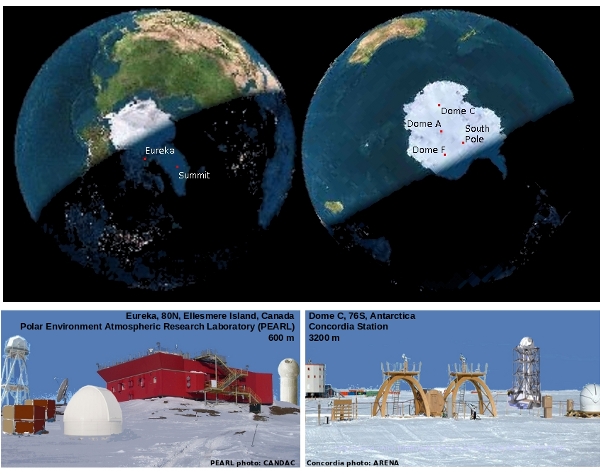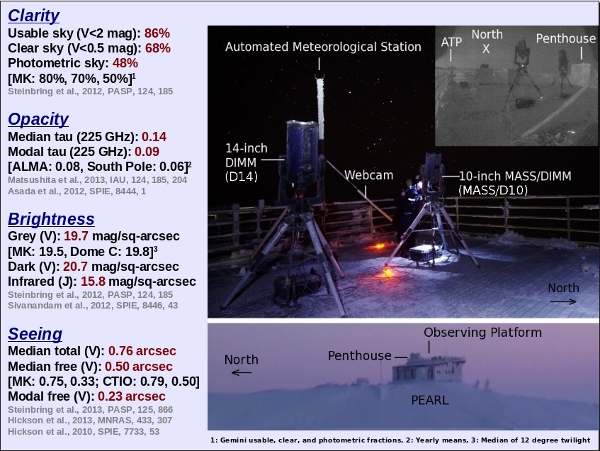
There are some obvious astronomy-related parallels between the Arctic and Antarctic, as illustrated in Figure 1. One is the duration of night/day cycles due to extreme latitude, which are the same for Eureka (80 deg N) and Dome A (80 deg S) and comparable for Dome C (76 deg S). Another commonality is the desire to pursue high-resolution optical/near-infrared imaging due to the availability of excellent seeing. An ambitious vision for Dome C including a 2-m-class telescope on a tall tower [1] has been presented (although not fully realized). Similarly, a plan to study the feasibility of a 1 m to 4 m adaptive-optics (AO) facility at the Polar Environment Atmospheric Research Laboratory (PEARL) received a recommendation in the 2010 Canadian Long-Range Plan (LRP).

A brief Arctic status update (specifically related to ground-based astronomy) was provided at the LRP Mid-Term Review (MTR) Session in Quebec City on 12 June, a kickoff meeting which followed the CASCA AGM. PEARL is promising; the last four years of testing has indeed found it to be a good location. Figure 2 shows the published basic characteristics for PEARL. The sky clarity, opacity, and brightness are consistent with its high latitude and cold temperatures during darkness. Seeing has been shown to be on par with some of the best mid-latitude sites. That was expected due to the special atmospheric conditions present, although more study would be needed to inform AO telescope designs. Further work is not funded, and that effort is currently on hold.

Eric Steinbring,